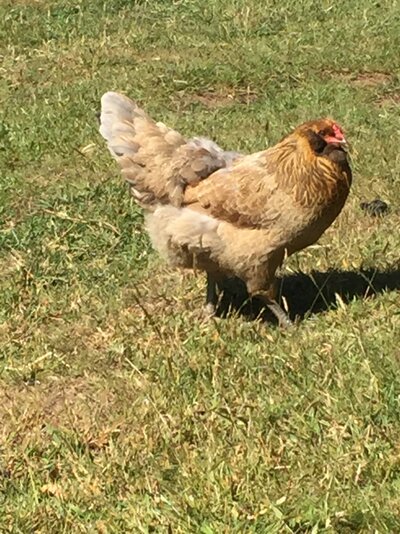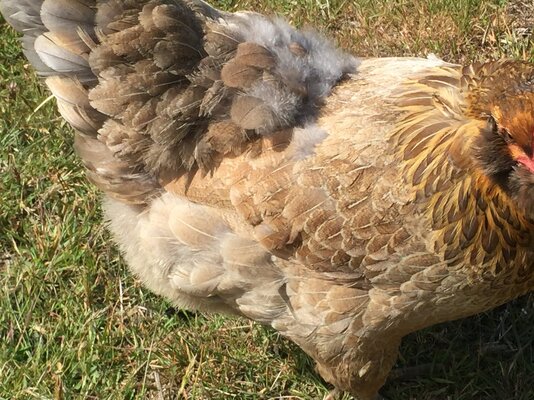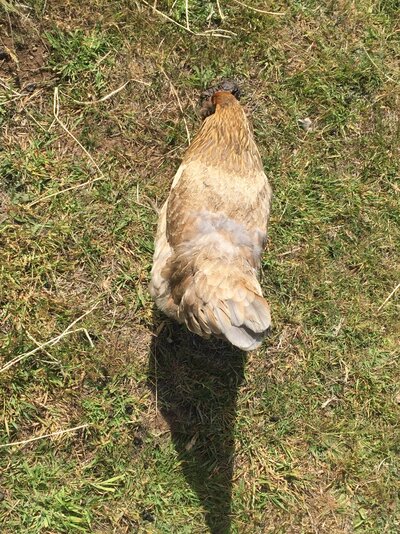Humboldthen
In the Brooder
- May 19, 2021
- 8
- 11
- 26
I can’t find the thread, so although redundant here it goes.
I think this EE hen is red ground based barred and dun. She has tan patterning on darker tan feathers. Her tail is fairly blue looking though. Some of her chicks look like they are the same coloring (only six weeks old at this point) so that’s why lavender seems unlikely. The roos have all been BYM, however, so who knows.
I think this EE hen is red ground based barred and dun. She has tan patterning on darker tan feathers. Her tail is fairly blue looking though. Some of her chicks look like they are the same coloring (only six weeks old at this point) so that’s why lavender seems unlikely. The roos have all been BYM, however, so who knows.






